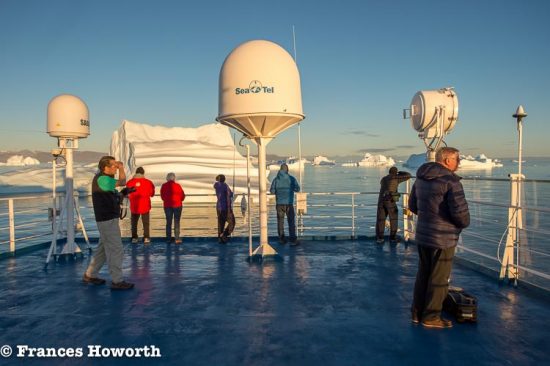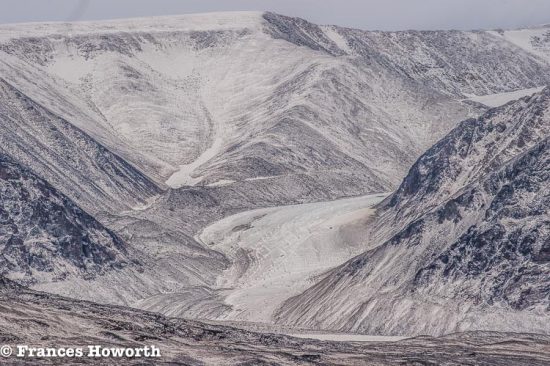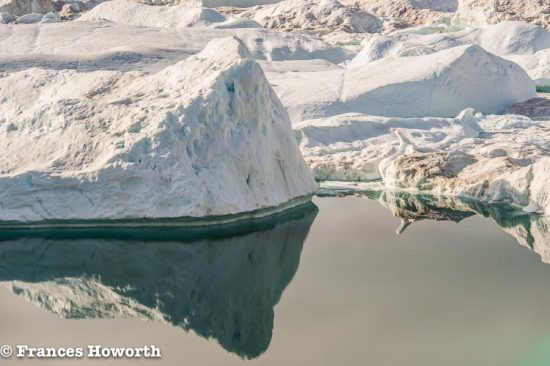
The Greenland ice sheet is made up of 1.8 million square kilometres of ice. It is calculated that if it melted, the global sea level would raise by approx. 6 – 7 metres.
Ice caps form whenever the summer temperatures are too cool to melt the snow that fell the previous winter. In fact, only about one metre of snow falls on the Greenland ice cap in any given winter, but little of it melts.
After three thousand years, ice formed from snow that fell on the centre of the ice cap reaches the outer fringe of mountains. They split the ice into rivers of crevasse-crossed ice, or glaciers, that creep down the valleys toward the sea. The rate of the glacier’s flow depends on both the angle of the slope beneath it and the air temperature.

The fastest glacier in Greenland is in Illulissat Fjord. It drains a watershed of ice stretching 200 miles back up onto the icecap, and in the warmth of the summer, advances up to thirty metres every day!
This 4.5 mile wide glacier moves seaward between 30 and 40 metres per day and calves more than 13.5 square miles (of ice annually. Loud thunder like cracks herald vast avalanches of ice as they split away from the icebergs and tumble into the sea.
Twenty million tons of ice berg drops off the end at the calving face each year, which if melted would produce 12.5 million gallons of fresh water which is enough to last the entire USA for a whole year.
When the ice reaches the sea, it pushes out into the fjord like a floating tongue precariously anchored at the end of the glacier.
Eventually, where a particularly deep crevasse transects the glacier, the ice snaps and an iceberg is born or calved with a crashing roar. The resulting waves carry it down the fiord ahead, aided by the flow of melt water, and it slowly makes its way out into the waters of Baffin Bay.

In size, Arctic icebergs are typically somewhere between a truck and a small island, many can stand 300 plus feet (93 metres) above the water, a height roughly equal to that of the Statue of Liberty. They have a marvellous diversity of shape, much of which stems from the variety of bays and fjords that birth them.
The stateliest icebergs of all are the tall, castle-like bergs from the Greenland coast. These are commonly about 180 metres long, often rising 45 metres above the waterline. That, though, is only the proverbial tip because roughly 75% of their mass lies underwater.
West Greenland is the principal sources of the large icebergs in Baffin Bay.The Illulissat Fjord alone calves 1,350 bergs each year
Together, the west Greenland glaciers produce about 15,000 bergs annually, of which perhaps four hundred are large enough to travel as far as Newfoundland and the Atlantic shipping lanes.

The iceberg that met the Titanic was nothing out of the ordinary, either in terms of size or location bergs have even been sighted as far south as Bermuda or the Azores. Nowadays, however, an Ice Patrol tracks icebergs all the way along the north eastern coast of Canada, and, there have been no recorded ship iceberg collisions since that fatal night when Titantic met her match.
Frances and Michael Howorth explored the North West Passages onboard Ocean Endeavour with the help of Destination Canada www.destinationcanada.com and Adventure Canada www.adventurecanada.com We are truly grateful to them both for the opportunity they provided with us to do our job.
